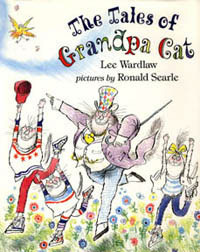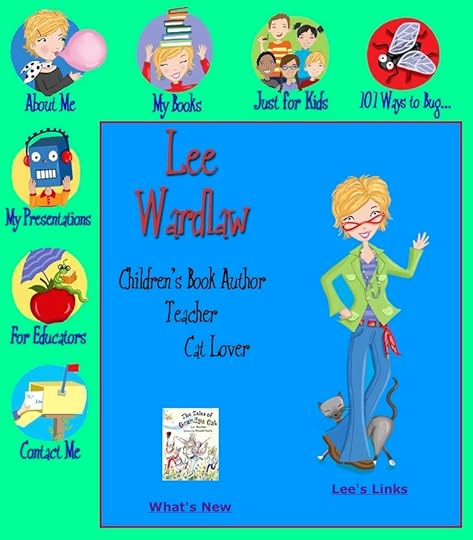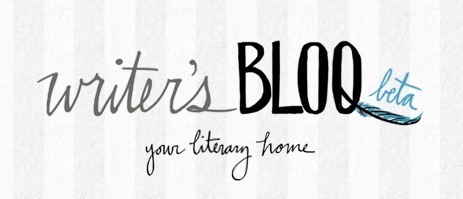Debbie Ridpath Ohi's Blog, page 118
April 9, 2012
My National Library Week Drawing

It's National Library Week! You can find out more info about National Library Week at AtYourLibrary.org.
Librarians should visit the National Library Week event page on the ALA (American Library Association) site.







National Library Week: April 8-14, 2012

It's National Library Week! You can find out more info about National Library Week at AtYourLibrary.org.
Librarians should visit the National Library Week event page on the ALA (American Library Association) site.







Through-The-Wardrobe Narnia Theme Room | BoingBoing
April 8, 2012
Easter Bunny Writer Cartoon Caption Challenge
April 5, 2012
Interview With Lee Wardlaw, My First Writing Mentor: Children's Books, Advice and a Book Giveaway
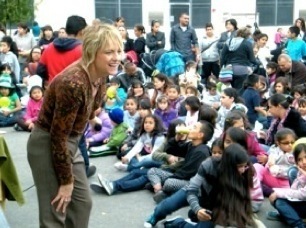 Photo: Craig Jaffurs
Photo: Craig Jaffurs
Book Giveaway: Post a comment below to be entered in a prize draw for a copy of Lee's 101 Ways To Bug Your Friends and Enemies!
Way back when I started pursuing getting my novels published, Lee Wardlaw offered to read what I had written and give me feedback. It was first time I had received a critique from a professional in the industry, and I was blown away by her generosity, encouragement and advice.
 I worked hard on revamping my manuscript and after another round or two, Lee passed my work on to her agent, Ginger Knowlton. Ginger took me on as a client! I'll always be grateful to Lee for that early encouragement and for taking that time with me.
I worked hard on revamping my manuscript and after another round or two, Lee passed my work on to her agent, Ginger Knowlton. Ginger took me on as a client! I'll always be grateful to Lee for that early encouragement and for taking that time with me.
Lee has written over two dozen books for young people and has won many awards and award nominations for her work. Most recently: 2012 Lee Bennett Hopkins Poetry Award (for Won Ton), 2012 NCTE/CLA Notable Children's books in the English Language Arts, 2012 Best Children's Book Award - Los Angeles Book Festival, 2012 ALSC Notable Children's Book , 2012 CCBC Choices as well as nominations for the 2012-13 Chickadee (Maine) Reader's Choice Award, Pennsylvania Young Reader's Choice Award and Rhode Island Reader's Choice Award.
You can find more info about Lee and her work at:
and on Facebook at https://www.facebook.com/leewardlaw
--------
 Photo: Lisa Yee
Photo: Lisa Yee
Q. How did you make your first sale?
Plucked from the Slush Pile! Yep, it happens. And I will never, E.V.E.R., forget the day I received that first acceptance. I screamed. I babbled. I called my mom. I might’ve even kissed the mailman…
Q. How did you get your agent?
I met her at the Santa Barbara Writer’s Conference, just a couple of days after I sold that first book. I hadn’t yet written a feigned nonchalant “Why, yes, if you’d like to publish my novel, by all means please feel free to do so” response to the editor, because I was still too busy screaming and babbling. So the agent stepped in and negotiated the contract for me. We worked together for about three years; in that time, she sold two more YA novels and a nonfiction book of mine.
When I decided I wanted to challenge myself by writing picture books, we parted ways. (She specialized in the teen and adult markets.) Over the next few months, I asked every author I met – at school visits, book festivals, SCBWI functions, conferences, etc. – which agents they would recommend. Again and again I heard: “Ginger Knowlton”. She was newish to the agenting world, but she worked at a highly respected New York agency, was learning the ropes from Marilyn Marlow (the Grand Dame of children’s book agents), and had a background in Early Childhood Education. Sold! I queried her with a couple of manuscripts, and she called not long after that, saying she’d like to represent me. I screamed. I babbled. I called my mom. I kissed my husband. (Our new mailman wasn’t nearly as cute.) Ginger and I have worked together now for almost 24 years. She’s stuck by me through thick and thin and anorexic. I adore her.
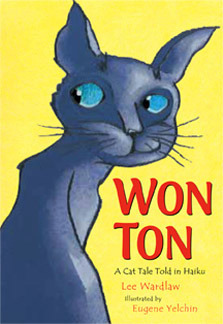 Q. You've written in so many genres in the children's book world. Which feels the most comfortable for you?
Q. You've written in so many genres in the children's book world. Which feels the most comfortable for you?
None. Nada. Zip. Zilch. Zero. If I feel ‘comfortable’ when I’m writing, then I know I’m not challenging myself.
Instead of ‘comfort’, I prefer to experience what psychologist Mihály Csíkszentmihályi calls flow. In his book Creativity: Flow and the Psychology of Discovery and Invention, Dr. C. (didn’t want to attempt that spelling twice!) describes flow as an intense focus on an activity – a concentration so deep that you’re unaware of yourself, your surroundings, of time passing. You see flow most often in Montessori schools. There’s an intense joy on the face of a young child who is wholly immersed in tackling and mastering a task. I experience flow when I’m writing something I love, whether it’s a poem or a picture book, a novel or nonfiction. It happens a lot, too, when I’m creating humorous dialogue for my middle grade characters. Their conversations just, uh, flow…
Q. How much time (or percentage of your time?) do you spend promoting?
In 2011, I had two new books published: a picture book, Won Ton – A Cat Tale Told in Haiku, and the third novel in my middle grade series, 101 Ways to Bug Your Friends and Enemies. It had been almost seven years (!) since I’d last had a new book out, so I really felt invisible. To offset that, I spent the majority of 2011 promoting like crazy.
My year-end totals were: 18 bookstore events, 17 school visits, 7 speaking engagements, 3 Skype visits, 3 blog interviews, 3 TV/radio/print interviews, 3 articles written, and 2 miscellaneous events. Miles driven: 3,500+. WHEW! I did all my own coordinating and publicity for these events, too, so that meant creating/printing/mailing flyers, sending info to schools, contacting newspapers, magazines, events websites, etc., etc. It was a huge job. Won Ton went into a third printing in less than a year, so I have to think the effort was worth it!
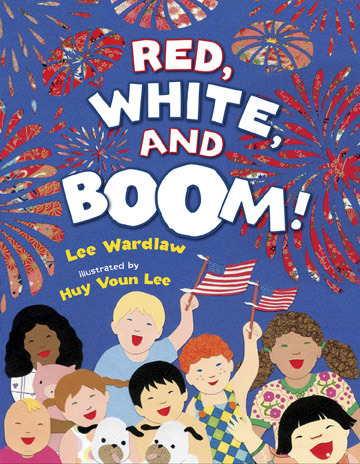 Coming April 22nd, 2012Usually, though, I’d say I spend 50% of my time writing and 50% promoting. The latter is usually through school visits, which I love. Put a microphone in my hand, and I turn into a total ham - - with cloves and brown sugar on top! But the balancing act is a constant struggle. It’s great fun working with and talking to my readers…but sometimes I’d really rather be at home, writing.
Coming April 22nd, 2012Usually, though, I’d say I spend 50% of my time writing and 50% promoting. The latter is usually through school visits, which I love. Put a microphone in my hand, and I turn into a total ham - - with cloves and brown sugar on top! But the balancing act is a constant struggle. It’s great fun working with and talking to my readers…but sometimes I’d really rather be at home, writing.
Q. Do you work on more than one project at a time? If so, how do you manage your time?
Eek. No. If I’m working on a novel, that’s really all I can handle. I tend to juggle a lot of characters and subplots, and I do a lot of research for each book, which means a full-to-overflowing brain. Ditto for my office, which needs shoveling out frequently. Add another novel or picture book to that mix, and I might implode - -or end up on that TV show “Hoarders”.
Sometimes, I can work on a couple of picture books at the same time, but that’s only in the early stages of each, where I’m mainly banging out ideas or plot lines.
Because I have A.D.H.D., I tend to get easily distracted. If I’m distracted, I don’t finish projects. So it’s best if I stick with one project at a time. That being said, I’ve learned that I need to be distracted now and then, otherwise I get bored and don’t finish projects. (Kind of a Catch-22.) So I treat my brain by entertaining it with writing in the mornings and promo stuff in the afternoons. The variety helps.
Q. What are your writing habits? (wordcount goals? rituals? favourite place? etc.)
 If I’m working on poetry or a picture book, I need to use a pen and notebook, and I need to sit somewhere comfy: curled up on the sofa, outside on the deck, etc. But if I’m writing a novel, I MUST work in my office. I’ve never done well working outdoors or in coffee shops. (Too many distractions.) My office is painted and decorated in shades of green (teal, seafoam, jade, forest), which calms me so I can focus.
If I’m working on poetry or a picture book, I need to use a pen and notebook, and I need to sit somewhere comfy: curled up on the sofa, outside on the deck, etc. But if I’m writing a novel, I MUST work in my office. I’ve never done well working outdoors or in coffee shops. (Too many distractions.) My office is painted and decorated in shades of green (teal, seafoam, jade, forest), which calms me so I can focus.
Other Must-haves:
1. A Mac. Forever and always. And it must have a 27” screen.
2. An Aeron chair (I have neck and lower back issues)
3. An ergonomic keyboard (wrist issues)
4. Natural lighting or a desk lamp with a 100-watt incandescent light bulb (government intervention issues. I’m stockpiling my 100’s! I hate CFLs. They make me squint.)
5. Plenty of protein snacks. (hypoglycemia issues)
6. A glass of iced tea with extra lemon, mint leaves and Splenda.
7. A cat or two curled up on my printer or on the floor heat vent.
I start work early-ish: 8:00 a.m. (I prefer between 5 and 6 a.m., but with a husband and teenaged son at home, those times aren’t optimal.) I write until noon; take an hour break; then go back to work until 2:40 when I leave to pick up my son at the high school.
My habits have changed over the years. In the past, my minimum goal was three hours or three pages, whichever came first. Now, if I’m working on a novel, I’ll set a different goal for myself every day, depending on where I am in the story. If I think I can rough out two or three major scenes in a particular chapter, then that’s my goal. If I know it’s going to be a particularly difficult chapter, for whatever reason, then I may set a goal of writing only one scene.
It’s that variety that keeps me from getting distracted!
When working on 101 Ways to Bug Your Friends and Enemies, I was really having a hard time focusing. (For some people, like me, ADHD gets worse asyou get older.) So instead of writing the book sequentially, I allowed myself to hop around, writing chapters out of order. That was great fun, and it kept me motivated.
Q. How much prep do you do before you start writing?
Tons.
Whether it’s a picture book or a novel, I write pages and pages about all the central characters, asking myself questions about who they are, what they want, why they want it, how they’re prevented from getting it, etc. It’s crucial to know what motivates your characters – what values move them to action – and why. Otherwise, you won’t know how they’ll act or react in every situation you put them in.
Each book also involves research. Take, for example, WON TON – A CATTALE TOLD IN HAIKU, the story of a wary shelter cat and the boy who adopts him. Now I know cats. My first spoken word was ‘kitty’ and I’ve shared my life with probably 30 cats over the years. BUT, I still needed to research cat behavior, specifically that of adult cats who’ve spent most of their lives in an animal shelter. I researched shelters, too, and how best to introduce a cat to a new home. (I thought it important for the book to be accurate so shelters would get behind it, maybe even carry it in their gift shops.) I also researched haiku - - American haiku is different from Japanese haiku - - and that’s when I realized I’d actually written the book in senryu! That was an important distinction for me to be awareof if I wanted elementary schools to use the book as a teaching supplement.
After the character work and the research, then I do a rough outline of the book. I ALWAYS know how the story is going to end before I start writing. For me, writing a novel is like taking a trip. You don’t just get in the car and start driving willy-nilly. (Well, in real life you might, if you’re the adventurous sort, but if you do that in fiction, you’ll end up with stream of consciousness stuff, not a novel.)
Before you back out of the garage, you need a destination and you need a road map. The road map is the plot outline. My outlines tend to change along the way, taking little detours here and there, picking up extra passengers (characters), maybe getting a flat tire (more conflict!), but I make sure the basic road map stays the same. That way, I and my story get to The End in one piece.
Q. What's the biggest mistake that new writers tend to make?
Ha. I don’t know. There are so many from which to choose! Not having read a children’s book since before the invention of dirt…not having been around children since being children themselves…worrying too much about contracts and agents and merchandising instead of focusing on their craft…submitting stories that aren’t stories at all, but incidents or anecdotes…the list goes on.
My biggest mistake, way back when, was writing picture books that featured inanimate, anthropomorphic characters. Kind of like The Missing Piece by Shel Silverstein – but without his wit, intelligence, heart and drawing talents! My early picture books were awful. Of course, I didn’t know that then…
Q. What advice do you have for aspiring picture book writers?
1. Read, read, read, read, read picture books. Pick out your favorites and take them apart, analyzing what you like about them and why; what about them resonates within you; what’s their unique tone, their style; what makes their characters fresh; what is special about their voice; and what gives them enough appeal to be read and re-read up to 500 times;
2. Take a poetry-writing class. Learning how to distill a story’s essence; using rhythmic, evocative language and vivid imagery; creating something that cries to be read aloud - - all of that is what you need to write poetry and picture books. I don’t think it’s an accident that WON TON is my most successful picture book. I started writing it while taking a poetry class from children’s book author and poet Ellen Kelley.
Q. For your picture books, how much interaction did you have (if any) with the illustrator?
None. Well, I might send them an email, introducing myself and saying I’m looking forward to the publication of ‘our’ book. But that’s it. Typically, the author and illustrator don’t collaborate on a picture book project. The author writes the story, the editor picks the illustrator, then the illustrator draws the pictures.
People are always surprised by this. But it makes sense. I wouldn’t want an illustrator standing over me, saying: “Gosh, I don’t know how to draw cats. Could you make your story about dogs, instead?” And I’m sure an illustrator wouldn’t want me dictating to him/her what kind of style, medium, etc., should be used. Of course, this means you have to have an extremely savvy editor, one with a clear vision of what kind of art will best complement and enhance the story.
Q. What are three things you wish you had known when you first started your writing career?
1. That rejections aren’t personal
2. That an editor’s suggestions aren’t set in stone
3. How much publicity and promotion I’d have to do!
Q. Any news about current or upcoming projects you'd like to share?
RED, WHITE & BOOM! (Holt, ages 2-6, illustrated by Huy Voun Lee) will debut in April. It’s a rhyming picture book about the ways families from different cultures celebrate our country’s independence.
I’m finishing up a sequel to WON TON…and making notes for 101 WAYS TO BUG YOUR BROTHER AND SISTER…and I have a cool idea for a nonfiction project (but I’m not saying what it is!).







March 29, 2012
Pay It Forward: Sharing The Books at Union Station in Toronto

Above photo courtesy author Linda Granfield.
Thanks to writer and librarian Nancy Runstedler for organizing the Toronto PIF (Pay It Forward): Sharing The Books event at Union Station yesterday.
I've heard of flash mob events before but never participated. The basic idea of a flash mob: a group of seemingly random people assemble suddenly in a public place, perform a seemingly pointless act for a brief time, then disperse. Our group was more of a smart mob because we did have a purpose:
The purpose of this Book Reading Flash Mob is to create an awareness of the Pay It Forward Organisation and the work that they do globally, as well as the impact that books have on our lives.

Above: Organizer Nancy Runstedler explains the basic rules of the event.
We were each encouraged to bring a book that inspired us, kept us company during a long journey, brought tears to our eyes, or got us thinking about things in a different light. I brought Ray Bradbury's DANDELION WINE because it was the first book that ever made me really aware of style in writing.

I've always been a huge Ray Bradbury fan. His autograph had a prominent page in my collection as a teenager:
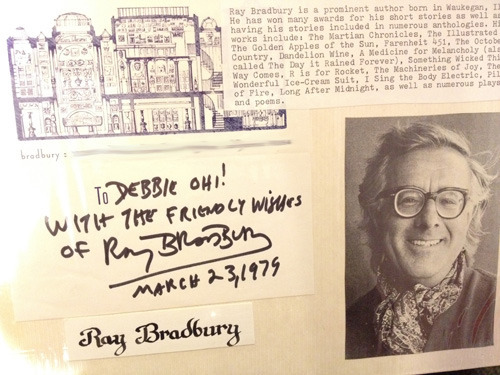
I also wrote a song called "Homecoming" based on his short story, "The Rocket Man". You can hear "Homecoming" on my music group's live performance album. I'm playing the rhythm guitar part on this track, Allison Durno plays lead guitar bits and Jodi Krangle sings lead. Allison and I sing some backup during the chorus. You can read my lyrics to "Homecoming" on the Urban Tapestry site.
I'm hugely jealous of anyone who has met Ray Bradbury in person.

Above: Some of us show our empty hands after giving away the books we were reading. I gave mine to a fellow by the ticket booths who had been watching us. He seemed surprised and pleased, then thanked me. :-) Photo courtesy Roben Goodfellow.

What I loved most about the event, (apart from the overall purpose, of course): those five minutes of sitting in one of Toronto's most-trafficked transportation hubs with a bunch of other book lovers and just READING. Knowing that these people had taken time out of their busy weekday schedules (Author Marthe Jocelyn came from Stratford!) to participate, to share their love of books.
Thanks again SO much to Nancy Runstedler for organizing the event! You can find out more about Pay It Forward at http://www.pifexperience.org/.
Related posts:
Cheryl Rainfield's wonderful blog post about the PIF Book Sharing event







March 28, 2012
Pay It Forward: Global Book Reading Flash Mob Event Today at 4 pm (your timezone)
I've never participated in a flash mob event before but was so intrigued by a BOOK-focused event that I can't resist.
You can find out if your city has organized an event at:
http://www.pifexperience.org/pifflashmob/







My new comic about the I'M BORED creation process

For those interested in comics, photos, interviews, sketches and info about how I'M BORED was created, do visit my I'M BORED Scrapbook.







March 27, 2012
Writing community highlight: Writer's Bloq
Just found out about Writer's Bloq, which describes itself as follows:
We are a community for MFA and Undergraduate writing students, professors, and alumni to share work, connect with peers, discover new writing, and uncover literary events. At the moment, there are students, alumni, and professors registered from programs including Austin, Brooklyn, Brown, Columbia, Cornell, Harvard, New School, NYU, Stanford, and Syracuse.
Twitter: https://twitter.com/#!/writersbloqinc
(events are all near Columbia University)







March 15, 2012
Creating book trailers for YA fiction anthology TOMO
As I've mentioned before, one of my short stories appears in the just-released YA fiction anthology, TOMO: Friendship Through Fiction (Stone Bridge Press, Mar/2012). Proceeds will benefit teens affected by the 2011 Japan quake/tsunami.
I created two book trailers to help promote the anthology. The editor, Holly Thompson, helped me collect the materials I needed.
Here's the shorter trailer (37 seconds):
and here's the longer trailer (1 minute, 20 seconds):
I used iMovie to create both. For the first, I used music that came with the iMovie software. Holly provided the music for the second trailer. I used Photoshop CS5 to create some of the background and compilation images.
I can already see places for improvement, but I only had a short time to put the trailer together and have very limited experience with book trailers. Learned a lot during the process! Like the importance of figuring out the purpose of book trailer before I start working on it, and to identify the target audience.
I never assume that people are going to be patient enough to watch through the entire trailer, so I purposely put the essential book info at the beginning of each trailer. At first, I worked on a trailer that was mainly focused on the disaster in Japan but then realized that people would then assume that most of the stories were going to be depressing or about the quake and tsunami (and they aren't!).
So I decided to put more of an emphasis on the people behind the project, especially editor Holly Thompson.
Anyway, I hope you like the trailers! Please do share them, and consider supporting the project by buying the book. You can find out more info about TOMO at:
http://tomoanthology.blogspot.com/



















